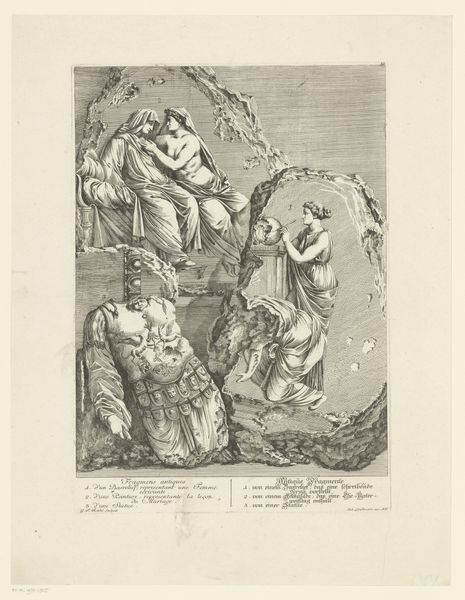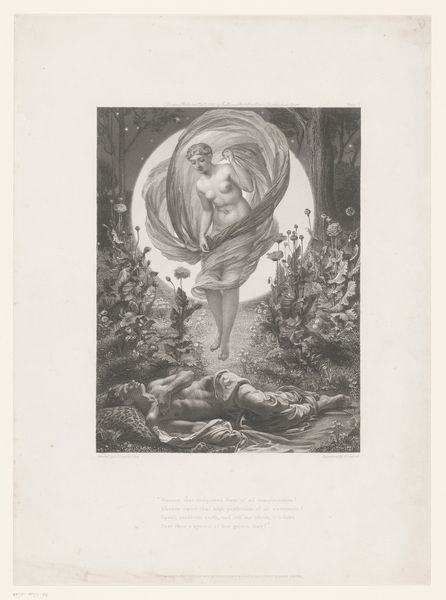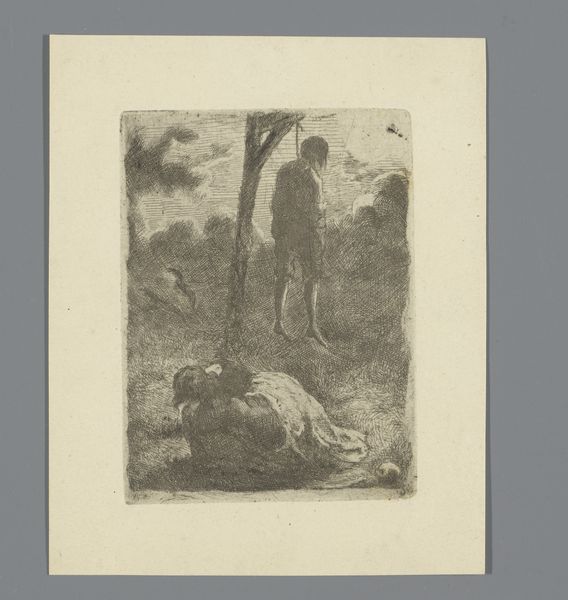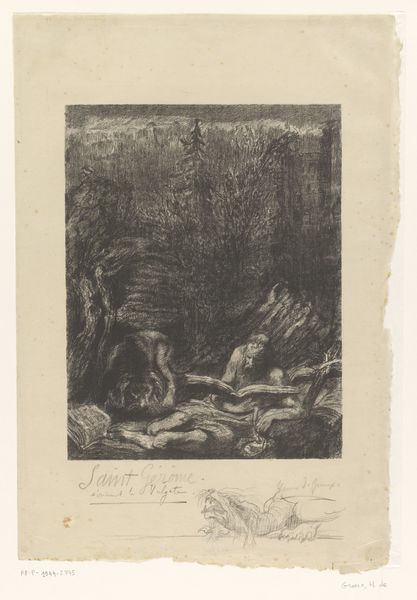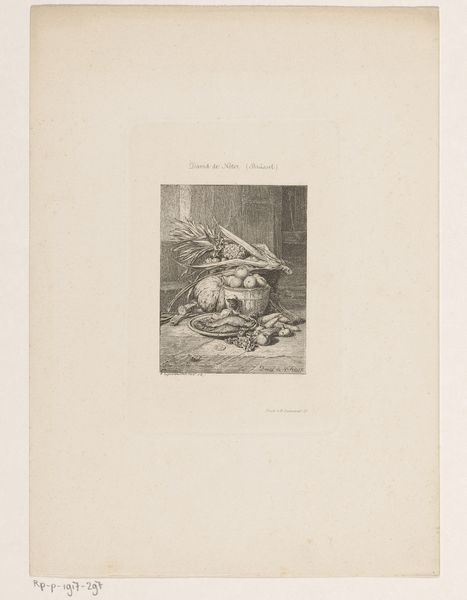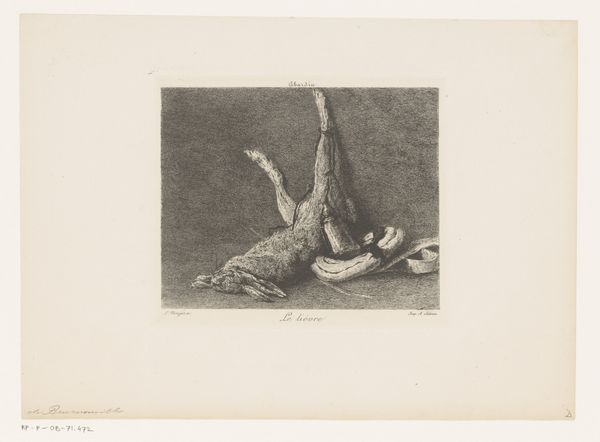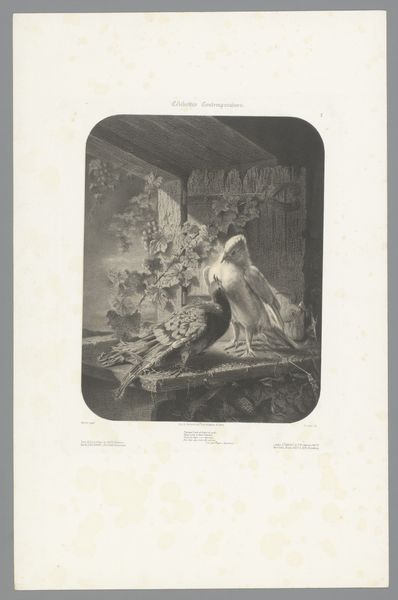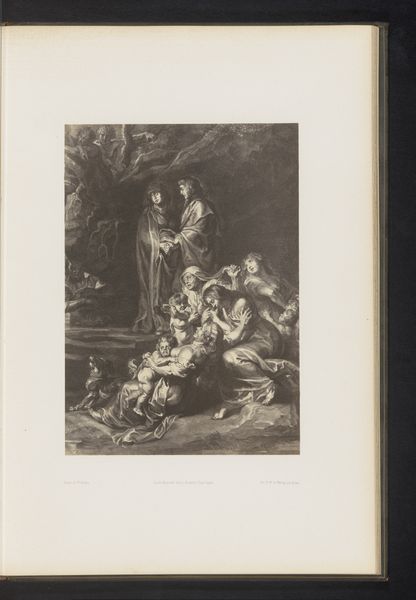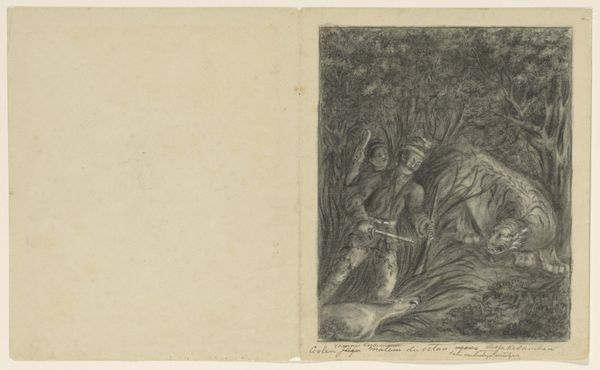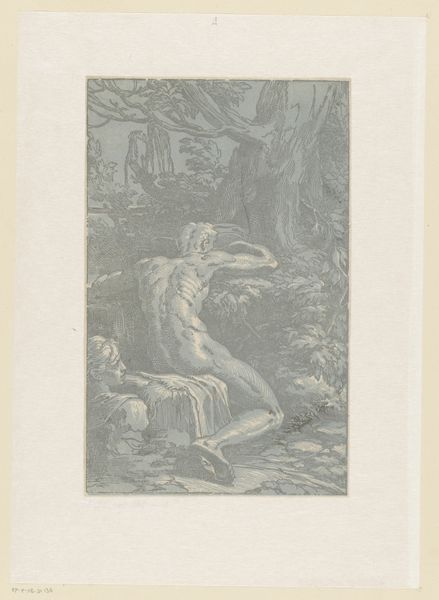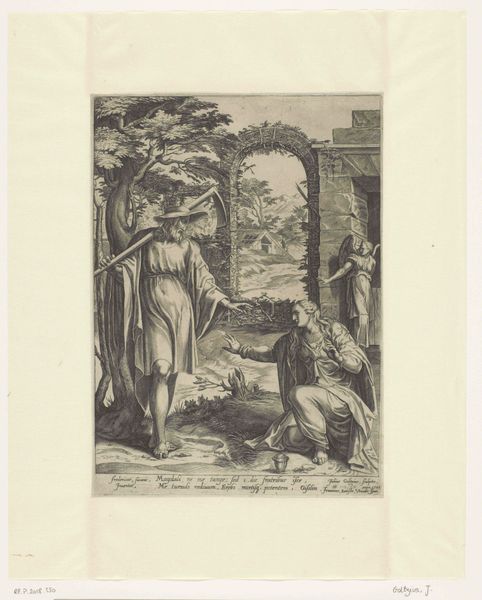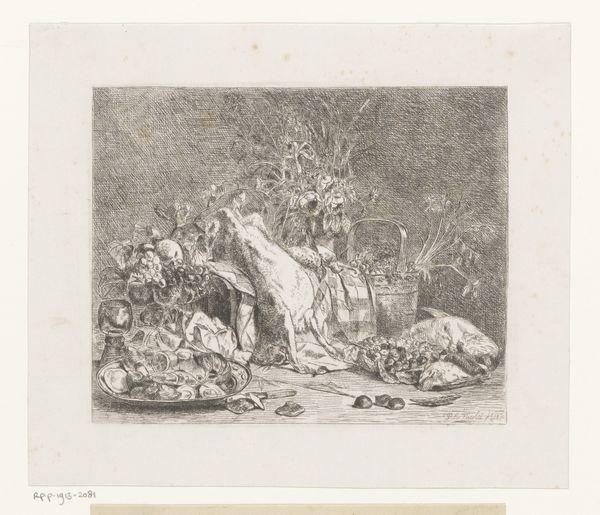
print, engraving
#
narrative-art
#
baroque
# print
#
figuration
#
line
#
history-painting
#
engraving
Dimensions: height 309 mm, width 254 mm
Copyright: Rijks Museum: Open Domain
Curator: This engraving, “The Murder of the De Witt Brothers” by Cornelis Huyberts, likely completed sometime between 1689 and 1712, presents a brutally iconic moment from Dutch history. Editor: My immediate reaction? Utter horror. The inverted bodies are stark, vulnerable, almost raw in their presentation. You can almost feel the chill of the metal etching, adding to the gruesome scene. Curator: Indeed. The print depicts the aftermath of the gruesome murders of Johan and Cornelis de Witt in 1672. They were leading figures in the Dutch Republic, and their violent deaths marked a turning point in Dutch politics, shifting power toward the House of Orange. Editor: The emphasis on the figures’ physicality, the marks etched on their bodies—they really drive home the violence. You can imagine the painstaking work required to render each line, each wound. What does that labour say about how people regarded making or buying this piece? This wasn’t some swiftly-done woodcut. Curator: Exactly. These prints would have circulated widely, shaping public opinion and serving as a powerful visual representation of political upheaval. The De Witt brothers were blamed for various political and military failings, making them targets of public rage and scapegoats. Editor: The torchbearer at the edge, illuminating this spectacle… who’s supposed to identify with them? A voyeur? Are we, the viewers, implicated? It’s interesting to me that such refined process--engraving—is employed to transmit what’s effectively popular political anger. The means seem to betray the message, in a way. Curator: Certainly, the level of detail adds to the sense of realism, even if stylized. The choice to disseminate this image through print suggests an attempt to solidify a particular narrative – to justify or even glorify the violence. It becomes part of the collective memory, shaping future understandings of Dutch history. Editor: It really makes you think about how acts of violence become spectacles and how material choices reinforce, or even contradict, historical narratives. Curator: Agreed. Looking at the history embedded in its very making makes me reflect again on its power, still felt today.
Comments
No comments
Be the first to comment and join the conversation on the ultimate creative platform.
